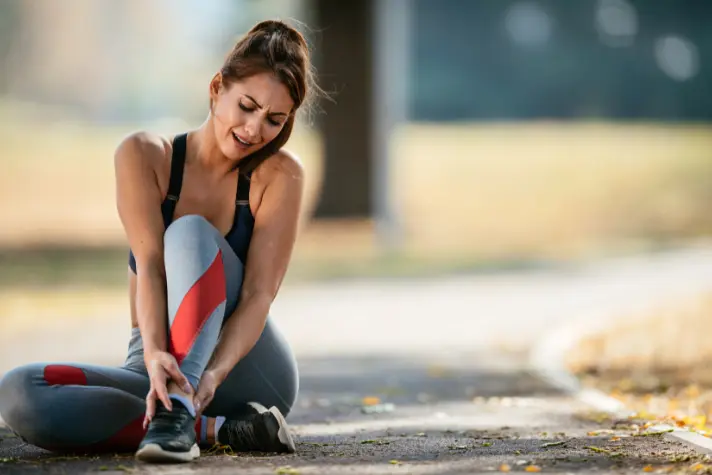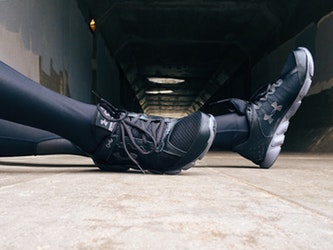
You’ve been recently involved in a slip and fall injury in your workplace, and while the lawsuit for the claim has ended, the long-term effects of the accident are still present and have become the reason for you being hindered from doing what you usually do.
Before the injury happened, you considered yourself active and would also go trekking outdoors, but after what happened, it’s challenging for you even to take a single step on the staircase. You can no longer move a muscle without asking for help from anyone.
Because of all the difficulties you’ve suffered after the injury, you’re determined to get back on track. You want to regain your strength to be able to do activities that you love, and you believe that exercise can become the solution to your woes right now.
You don’t need to be a rocket scientist to be able to determine that indeed, exercising can bring countless benefits to your well-being. The same is still true even when you’re injured.
But now that you’re feeling pain in certain parts of your body, you should be cautious when you’re exercising as one small move can bring more harm than good to your injuries.
5 Key Considerations When You’re Planning To Exercise After A Slip And Fall Injury
For you to be guided on what to do, here are some of the key considerations when you’re planning to exercise after a slip and fall injury:
1. You should get your doctor’s approval
Sure, you might think that you’re already capable of doing any exercises, but not seeking the approval of your doctor can pose a serious health risk in the long run.

- It’s best that you seek approval from the experts – the doctors and the therapist if you have one – before you lace up your sneakers or schedule a morning run around the neighborhood.
- Doing any exercises without their approval could make your recovery last longer or worsen your injury, and pushing yourself too much can never bring any good.
2. You should mentally prepare yourself
After getting the go signal from the professionals, you should be able to spend time thinking about why you were injured in the first place and what possible precautions you to avoid the mishap from happening.
- For example, if you acquired the slip and fall injury from a gym, ask yourself if you’ve been too focused on your routines that you fail to notice the floor conditions around you, or if you’ve been neglecting to warm up before doing any of your routines. Considering all of these things will help you determine which to avoid and improve in the future.
- If part of the woes stopping you from being hassle-free is if you’re wondering if you could get any compensation from your slip and fall, then perhaps you can click here for more information on legal remedies you could avail.
- Now is also a good time to stay positive even after the slip and fall injury. You should remember that injuries are temporary and you’ll be able to return to your daily gym routines or sports activities soon enough. You just need to take some time to regain the speed and strength you once had.

3. You should start slow
Before the slip and fall accident, you might be spending two hours at the gym lifting weights or doing rigorous cardio exercises. Since you’ve just had an injury, don’t push yourself to do any of these immediately.
- Don’t expect that even if you’re a well-trained and certified gym buff, you’ll be able to do all of these with ease even with an injury.
- Instead, you should start slow and be consistent with your progress. For instance, you can start at 50% of your “normal” activity levels and gradually increase 10% to 15% each week if you feel no pain during the entire process.
4. You should branch out
Doing different kinds of exercises that are targeted at different parts of your body is key for your long-term recovery.
- Doing this will help you stay fit while ensuring that the injured part of your body regains strength over time.
- If you have hurt your wrist from the slip and fall accident, hiking or other lower-body activities can help you become physically active while giving your injuries time to heal or if you hurt your knee badly, you can try out a low-impact activity such as swimming to your routine.
- Thinking about which parts are injured when you exercise and making sure that these parts are not targeted during the exercise routines can go a long way toward your recovery.
5. You should listen to your body
Again, you should fully understand the fact that your body is still in the process of healing, and you should be patient enough before you can regain your body’s strength.
- Feeling a little discomfort during any exercise is okay, too much of it might be your body’s way of telling you that you’ve gone too far.
- Whatever exercise you decide to do with your injury, you should not be in agonizing pain, and you should feel better as soon as you stop moving.
- If you’re still feeling the pain after an hour of doing your exercise, you might have to rest for at least a day before you try again. Once you do, you should be able to exercise at a less-intense level.
There’s no question of how exercising can work wonders for your body. But you also have to understand that since you’ve been involved in a slip and fall injury, you have to be extra careful with your actions; you have to be watchful before, during, and after you’re exercising to maximize the effects.
As long as you’re able to carefully implement these steps, exercising can pave the way toward your long-term recovery!
About The Author:
 Janine Penn has been a law writer for more than a decade. She hopes to impart some of her wisdom to others through her written works. She is often reading a new book whenever she has the time.
Janine Penn has been a law writer for more than a decade. She hopes to impart some of her wisdom to others through her written works. She is often reading a new book whenever she has the time.




